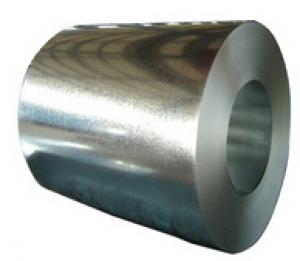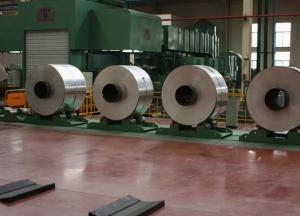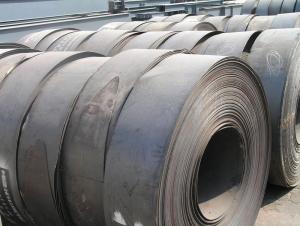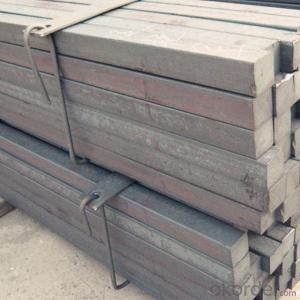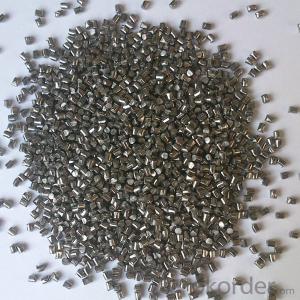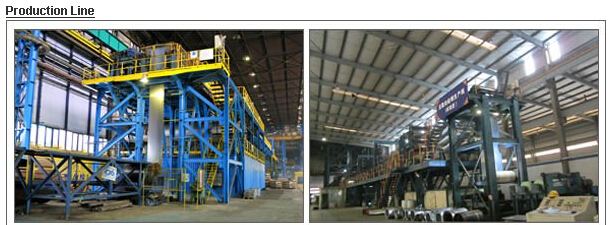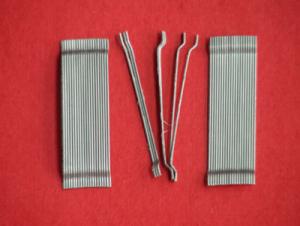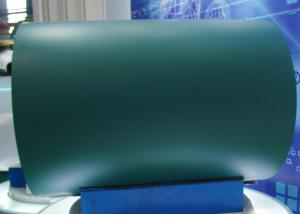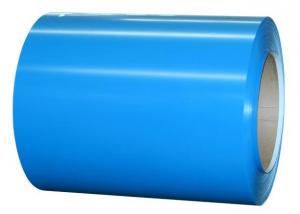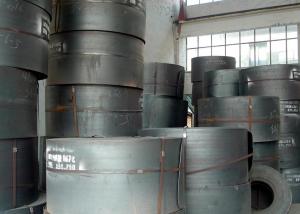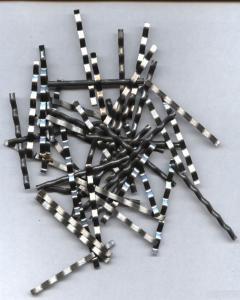Surface Finish Cold Rolled Steel
- Loading Port:
- China Main Port
- Payment Terms:
- TT or LC
- Min Order Qty:
- -
- Supply Capability:
- -
OKorder Service Pledge
OKorder Financial Service
You Might Also Like
Specification
1. Thickness: 0.4-2.0mm
2. Width: 900-1250mm
3. Inner Diameter: 508&610mm
4. Weight of Steel Coil: 3-15MT
5. Heat Treatment: Annealed + Smoothed
6. Margin Status: EC & EM
7. Surface Quality: FC & FD
8. Surface Treatment: Oiling
9. Surface Status: Bright
Chemical Components
Grade | Chemical Components | ||||
C | Mn | P | S | Alt | |
DC01 | ≤0.10 | ≤0.50 | ≤0.035 | ≤0.025 | ≥0.020 |
DC03 | ≤0.08 | ≤0.45 | ≤0.030 | ≤0.025 | ≥0.020 |
DC04 | ≤0.08 | ≤0.40 | ≤0.025 | ≤0.020 | ≥0.020 |
Mechanical Properties
1. Yield Strength: ≤320MPa
2. Tensile Strength: ≤370MPa
3. Elongation (L=50mm, b=25mm) When:
(1) Nominal Thickness<0.25mm: 30%
(2) Nominal Thickness 0.25mm-<0.40: 32%
(3) Nominal Thickness 0.40-<0.60mm: 34%
(4) Nominal Thickness 0.60-<1.0mm: 36%
(5) Nominal Thickness 1.0-<1.6mm: 37%
(6) Nominal Thickness >1.6mm: 38%

- Q:What are the different types of steel alloys?
- There are several different types of steel alloys, including carbon steel, stainless steel, tool steel, alloy steel, and high-strength low-alloy steel.
- Q:How are steel sheets used in the manufacturing of industrial machinery?
- Steel sheets are commonly used in the manufacturing of industrial machinery as they provide strength, durability, and versatility. These sheets are used for constructing machine frames, enclosures, and supports, as well as for creating various components such as gears, shafts, and brackets. The ability to mold and shape steel sheets allows manufacturers to customize machinery according to specific requirements, ensuring optimal performance and reliability.
- Q:How is steel used in the construction of amusement parks and entertainment venues?
- Steel is used extensively in the construction of amusement parks and entertainment venues for its strength, durability, and versatility. It is used to create the structural framework of roller coasters, water slides, and other rides due to its ability to withstand heavy loads and maintain stability. Steel is also used to construct the supporting beams, columns, and trusses of buildings, providing a solid foundation for the various attractions and facilities within the park. Additionally, steel is used in the fabrication of decorative elements, such as gates, fences, and themed structures, adding both aesthetic appeal and safety to the overall design of the park.
- Q:What are the different types of steel sheets and their uses?
- There are several different types of steel sheets, including hot rolled, cold rolled, galvanized, and stainless steel. Hot rolled steel sheets are commonly used in construction and manufacturing due to their strength and durability. Cold rolled steel sheets are more precise in their dimensions and are often used in automotive and appliance manufacturing. Galvanized steel sheets are coated with zinc to prevent rusting and are commonly used in outdoor structures and roofing. Stainless steel sheets are resistant to corrosion and are used in various industries such as food processing, medical equipment, and construction.
- Q:What are the applications of steel angles?
- Steel angles have a wide range of applications in various industries. They are commonly used in the construction industry for structural support, such as in building frames, bridges, and sign structures. Steel angles are also utilized in the manufacturing sector for machinery frames, equipment supports, and conveyor systems. Additionally, they find application in the automotive industry for chassis components, as well as in the furniture industry for manufacturing shelves and brackets. Overall, steel angles are versatile and essential components in many structural and manufacturing applications.
- Q:What are the different types of steel chains and their uses in the automotive manufacturing process?
- There are several types of steel chains used in the automotive manufacturing process. Some common types include roller chains, timing chains, and conveyor chains. Roller chains are commonly used in engines and power transmission systems to transfer power from the engine to various components. Timing chains are used to synchronize the movement of engine valves and pistons, ensuring proper engine performance. Conveyor chains are utilized in assembly lines and production processes to move and transport automotive parts. These steel chains play a crucial role in the automotive manufacturing process by ensuring smooth operation, power transmission, and efficient production.
- Q:What are the advantages of using steel wire?
- There are several advantages of using steel wire. Firstly, steel wire is incredibly strong and durable, making it suitable for a wide range of applications. It can withstand heavy loads, resist deformation, and maintain its structural integrity over time. Secondly, steel wire has high tensile strength, meaning it can withstand pulling forces without breaking. This makes it ideal for use in industries such as construction, automotive, and manufacturing. Additionally, steel wire is resistant to corrosion, which increases its lifespan and reduces maintenance costs. Lastly, steel wire is flexible and versatile, allowing it to be easily shaped and manipulated for various purposes. Overall, the advantages of using steel wire include its strength, durability, resistance to corrosion, and versatility.
- Q:What are the different types of steel storage tanks?
- There are several different types of steel storage tanks, including aboveground storage tanks (ASTs), underground storage tanks (USTs), atmospheric storage tanks, pressure vessels, and bolted tanks. Each type serves a specific purpose and is designed to store different substances or materials.
- Q:How is steel plate heat-treated for optimal strength?
- Steel plate is heat-treated for optimal strength through a process called quenching and tempering. First, the steel plate is heated to a high temperature, known as the austenitizing temperature, which allows the carbon in the steel to dissolve uniformly. It is then rapidly cooled by immersing it in a quenching medium, such as oil or water, to transform the crystal structure into a hard martensitic phase. Subsequently, the plate is reheated to a lower temperature and held for a specific period to temper the martensite, reducing its brittleness while maintaining a significant level of strength. This heat treatment method enhances the hardness, toughness, and overall mechanical properties of the steel plate, making it ideal for various applications requiring optimal strength.
- Q:How is steel wire used in the manufacturing of springs?
- Steel wire is commonly used in the manufacturing of springs due to its high tensile strength and durability. It is typically formed into coils or helical shapes, allowing it to store and release energy when subjected to external forces. The steel wire is carefully selected based on its specific properties, such as diameter and strength, to meet the desired requirements of the spring.
1. Manufacturer Overview |
|
|---|---|
| Location | |
| Year Established | |
| Annual Output Value | |
| Main Markets | |
| Company Certifications | |
2. Manufacturer Certificates |
|
|---|---|
| a) Certification Name | |
| Range | |
| Reference | |
| Validity Period | |
3. Manufacturer Capability |
|
|---|---|
| a)Trade Capacity | |
| Nearest Port | |
| Export Percentage | |
| No.of Employees in Trade Department | |
| Language Spoken: | |
| b)Factory Information | |
| Factory Size: | |
| No. of Production Lines | |
| Contract Manufacturing | |
| Product Price Range | |
Send your message to us
Surface Finish Cold Rolled Steel
- Loading Port:
- China Main Port
- Payment Terms:
- TT or LC
- Min Order Qty:
- -
- Supply Capability:
- -
OKorder Service Pledge
OKorder Financial Service
Similar products
New products
Hot products
Hot Searches
Related keywords
